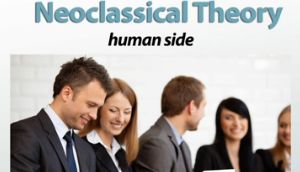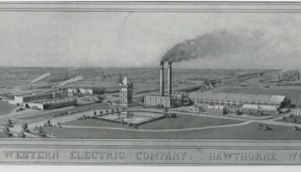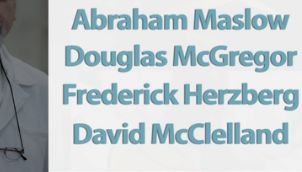Neoclassical Theory of Management: The Human Relations Approach - Quiz
Choose your answer and write the correct one down. Then click HERE for the answers to this quiz.
NOTE: The transcript from the video is listed below the quiz for your reference.
1. The neoclassical school of thought was aimed at fixing issues that arose from which prior school of thought?
- behavioral management theory
- classical management theory
- scientific management theory
- administrative management theory
- modern management theory
2. Which of these describes the focus of neoclassical management theory?
- the best way to structure reward systems
- the most effective way to accomplish a task
- the most effective way to track employee productivity
- the best way to motivate, structure, and support employees
- the best way to promote a good work-life balance
3. Which two theories make up the neoclassical school of thought?
- human relations and administrative
- human relations and behavioral
- administrative and behavioral
- administrative and scientific
- behavioral and scientific
4. Which neoclassical school of thought is believed to be a result of the Hawthorne Studies?
- behavioral
- administrative
- classical
- human relations
- scientific
5. According to neoclassical management theory, managers are encouraged to do which of these?
- create supportive social systems and facilitate the personal development of their workers
- create supportive social systems and develop adequate pay systems
- develop adequate pay systems and facilitate the personal development of their workers
- facilitate the personal development of their workers and enhance working conditions
- enhance working conditions and create supportive social systems
In the early 1920s, a shift away from classical management theory took place as theorists began to consider the human side of an organization and the social needs of employees. In this lesson, you will learn about the evolution of the neoclassical theory of management and its two sources: the human relations movement and the behavioral management movement.
A Shift Away from Classical Management Theory
In the early 1920s, classical management theorists, such as Frederick Taylor, Henry Gantt, and Frank and Lillian Gilbreth, spent their time researching how a specific job was done, what steps were taken by an employee to complete the work, and the amount of time it took a worker to complete a task using different methods. They then used this information to determine the most effective way of completing a task. While these individuals focused on the science of creating specialized work processes and workforce skills to complete production tasks efficiently, critics began to scrutinize classical management theory for its potentially harmful effects on workers.
 |
It was not so much the methodology of finding the most efficient way to complete a task that concerned critics, but the underlying assumption of classical management theorists that managers and workers would meet halfway on their attitudes towards standardization. However, many believed that placing too much emphasis on standardization of jobs and workers had not created this 'mental revolution' that Taylor and his associates had hoped for, but rather had inadvertently created an attitude among managers at the time that employees were nothing more than an appendage to a machine. While machines and processes could be standardized, critics argued that it was unrealistic to expect that standardization among emotional beings; the two needed to be looked at individually. So, as Taylor and other classical management theorists continued their work on standardization, others started to conduct research on the worker, and thus, the neoclassical theory of management was born.
The Emergence of the Neoclassical Theory of Management
The neoclassical theory was an attempt at incorporating the behavioral sciences into management thought in order to solve the problems caused by classical theory practices. The premise of this inclusion was based on the idea that the role of management is to use employees to get things done in organizations. Rather than focus on production, structures, or technology, the neoclassical theory was concerned with the employee. Neoclassical theorists concentrated on answering questions related to the best way to motivate, structure, and support employees within the organization.
 |
Studies during this time, including the popular Hawthorne Studies, revealed that social factors, such as employee relationships, were an important factor for managers to consider. It was believed that any manager who failed to account for the social needs of his or her employees could expect to deal with resistance and lower performance. Employees needed to find some intrinsic value in their jobs, which they certainly were not getting from the job that was highly standardized. Rather than placing employees into job roles, where they completed one specific task all day with little to no interaction with coworkers, employees could be structured in such a way that they would frequently share tasks, information, and knowledge with one another. The belief was that once employees were placed into this alternate structure, their needs for socialization would be fulfilled, and thus they would be more productive.
Two Movements in the Neoclassical Theory
The neoclassical theory encompasses approaches and theories that focus on the human side of an organization. There are two main sources of neoclassical theory: the human relations movement and the behavioral movement. The human relations movement arose from the work of several sociologists and social physiologists who concerned themselves with how people relate and interact within a group. The behavioral movement came from various psychologists who focused on the individual behavior of employees. To better understand these movements, let's take a look at how the work of these various sociologists and psychologists influenced management thought.
Human Relations Movement
The human relations movement was a direct result of Elton Mayo and Fritz J. Roethlisberger's Hawthorne studies, which were designed to find ways to increase worker productivity at Western Electric's Hawthorne Works factory by assessing working conditions related to things such as lighting levels, rest periods, and the length of a work day. Those participating in the experiments were watched closely by the researchers. During the experiment, productivity levels of those participating in the experiment increased but not directly due to the conditions that Mayo and Roethlisberger were imposing on them.
 |
Because they could not correlate the increase in productivity to the working conditions that they were controlling in the experiment, alternative causes were explored. Eventually, the researchers attributed the increase in productivity to the higher morale that was witnessed in the group during the experiment. This morale and productivity boost was indirectly caused by the changes the researchers made to working conditions, including:
- Workers feeling special because they were selected to participate in the study and were being paid so much attention by the researchers.
- Workers developing strong interpersonal relationships with one another and their supervisor as they determined how to manage their work together under the new structure. They all valued the contributions of their coworkers.
- The strong interpersonal relationships also created a pleasant and enjoyable work environment.
The conclusions of the Hawthorne studies illustrated the importance of considering the social and human relations needs of workers. Mayo and Roethlisberger's conclusions about worker productivity increasing due to a feeling of value when management and coworkers show additional attention was really in sharp contrast to the idea that money was the best way to motive employees to work at higher levels, which was a common perception at the time. In fact, financial rewards were found to be much less conducive to worker motivation and productivity than fulfilling their social and human relations needs. The Hawthorne studies paved the way for behavioral management theory and have significantly shaped the manner in which employee motivation is accounted for in the workplace.
Behavioral Movement
With the human relations movement strongly in place, theorists became increasingly interested in exploring the individual employee and the nature of work itself. Remember, many employees at the time were left searching for some intrinsic value in their work due to standardization of jobs. Because workers were performing the same tasks day after day, their individual skills and capabilities were not being challenged.
 |
The behavioral movement worked to change all that by researching ways to help employees find personal satisfaction in their jobs by providing meaningful work. The behavioral theory of thought was based on the work of Abraham Maslow, Douglas McGregor, Frederick Herzberg, and David McClelland , all of whom searched for ways to help motivate employees based on their personal needs. Behavioral psychologists argued that we have a human desire to work towards personal growth, accomplishment, and achievement. Therefore, in addition to providing sufficient pay and showing that managers value their employees, employers must also provide employees with a path to personal development and achievement.
Lesson Summary
Let's review. The neoclassical theory, which includes the human relations movement and the behavioral movement, encompasses approaches and theories that focus on the human side of an organization. The neoclassical theory was an attempt at incorporating the behavioral sciences into management thought in order to solve the problems caused by classical theory practices. Emphasis shifted from production, structures, and technology to a focus on social interaction. Neoclassical theorists concentrated on answering questions related to the best way to motivate, structure, and support employees within the organization. Managers were encouraged to create supportive social systems and facilitate the personal development of their workers.